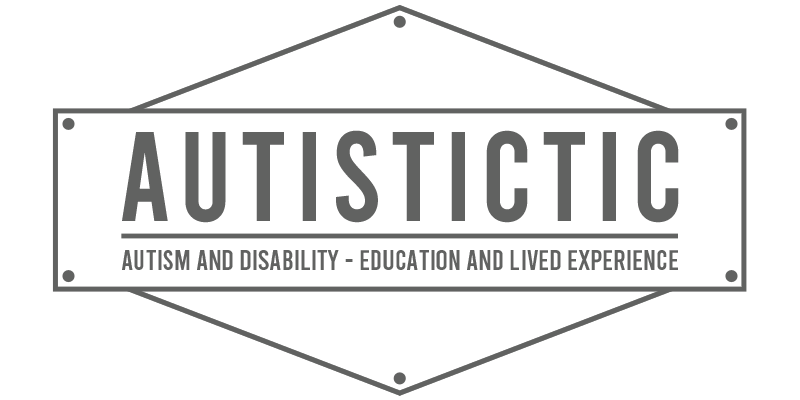HOME » BLOG » NON-SPEAKING AND NON-VERBAL

NON-SPEAKING AND NON-VERBAL

WHAT “NON-VERBAL” AND “NON-SPEAKING” MEAN
“Non-verbal” means not using words to communicate.
“Non-speaking” means not using oral speech to communicate.
Neither “non-verbal”, nor “non-speaking” mean that a person doesn’t communicate.
Non-verbal people e.g. communicate with vocalizing, facial expressions, body posture, body movement, eye contact, gesturing, interacting with other people, etc. Non-speaking people e.g. communicate with writing, typing, AAC devices and apps, letterboards, symbol cards, picture cards, etc.
Neither “non-verbal”, nor “non-speaking” refer to a person’s receptive language abilities.
Instead they both refer to a person’s expressive language use. This means they don’t describe whether someone understands other people’s words or oral speech. Instead they describe whether or not a person uses words or oral speech to communicate.
NON-SPEAKING AND NON-VERBAL PEOPLE ARE SEVERELY MARGINALIZED
Non-speaking and non-verbal people’s communication differences are commonly misperceived and/or falsely portrayed as the inability to understand language, have thoughts, and as being less intellectually competent and capable.
They are routinely dehumanized and deemed less than. They are denied their rights to autonomy and agency. They are subjected to segregation, institutionalization, and abuse. Non-speaking and non-verbal people are frequently denied access to meaningful education, jobs, and inclusion. They are marginalized and oppressed in all areas of life.
Non-verbal and non-speaking people are routinely denied access to communication methods that work for them and denied the support they need to use them. They are subjected to harmful “therapies” and “treatments”. They are denied access to therapies and treatments they would benefit from. When using certain communication methods, non-speaking and non-verbal people are accused of not actually communicating themselves but told their communication partner is the one creating the messages. Some are accused of faking their speech impairment or of deliberately not speaking.
Additionally, non-speaking and non-verbal people also belonging to other marginalized groups are at an even higher risk for the above-mentioned harm.
CAUSES FOR BEING NON-SPEAKING AND/OR NON-VERBAL
Non-speaking and non-verbal themselves are not conditions. They are umbrella terms that describe a trait. The trait being not using words (non-verbal) or oral speech (non-speaking) to communicate.
Many different conditions can cause these traits to occur in a person. A person can have one or several conditions that cause them to be non-speaking and/or non-verbal, and these conditions can interact with each other.
These are some conditions that can cause someone to be non-speaking and/or non-verbal:
Autism
Apraxia
Selective Mutism
Cerebral Palsy
Stuttering
Down Syndrome
Tourette Syndrome
Muscular Dystrophies
Aphasia
Locked-In Syndrome
Traumatic Brain Injuries
Dementia
ALS (Amyotrophic Lateral Sclerosis)
Tracheostomies
Laryngectomies
THE NON-SPEAKING AND NON-VERBAL SPECTRUM
Non-verbal and non-speaking are spectrums. This means, that occurrence, frequency, duration, and severity of being non-speaking and/or non-verbal can differ from person to person, and vary and fluctuate for each person experiencing them.
Because there is such a vast range of lived experiences under these umbrella terms, it is often helpful to specify an individual’s or group’s circumstances by adding more details than just “non-speaking” and/or “non-verbal”.
Here are some terms for specifying “non-speaking” and “non-verbal” more:
– name the condition/s causing being non-speaking/non-verbal
– fully non-speaking/fully non-verbal
– mostly non-speaking/mostly non-verbal
– intermittently non-speaking/intermittently non-verbal
– temporarily non-speaking/temporarily non-verbal
– unreliable speaker
– AAC user
– mind-body-disconnect
– echolalic/echolalia/echoes
– palilalic/palilalia/echoes
– scripting
– types to communicate
– uses picture cards to communicate
– uses sign language to communicate
– uses some words
– speech impaired/impaired speech
– functional speech
– meaningful speech
– vocalizes/uses vocalizations
– vocal stimming
– communication-related disability/condition
– communication disability/condition
– speech-related disability/condition
– speech disability/condition
– motor difficulties
– sensory processing
– cognitive processing
These are only some possible terms. There are many more. Please note that it should always be up to the non-speaking/non-verbal individual to determine which labels they like, don’t like, want to use for themselves, and want others to use for them.
PERSONAL EXPERIENCE WITH BEING NON-SPEAKING AND NON-VERBAL
I am intermittently non-speaking and intermittently non-verbal, due to various disabilities.
I am autistic. This neurological developmental disability causes processing differences which can cause speech difficulties. I become non-speaking or non-verbal if I have more to process than I can. Whether I become non-speaking or non-verbal, whether or not I can still use other communication methods like my AAC device, how often this happens, how severely it presents, and how long it lasts depends on a number of circumstances.
During a meltdown, I am non-verbal and can’t use alternative communication. This often persists through the recovery phase as well. During a shutdown, I can usually not speak, but can still communicate verbally through e.g. my AAC device. Overload causes me to become non-speaking more so than becoming non-verbal.
Speech is exhausting for me regardless, so using my AAC device instead of trying to force oral speech is an incredibly important accommodation for my autism. Doing this can prevent overload and burnout.
I have Selective Mutism and Generalized Anxiety Disorder. When my Selective Mutism gets triggered, the resulting freeze response in my brain and nervous system causes me to become unable to speak. I can still think mostly normally, I know what I want to say, but I can’t make my speech mechanism work, can’t make the words come out of my mouth.
How often this happens, how severely it presents, and how long it lasts depends on a number of circumstances, just like with becoming non-speaking due to my autism.
I have migraines. Migraines are a neurological condition. During an acute migraine attack, my motor functions are impaired. I lose feeling in one side of my body, including my face, throat, tongue, and lips. I can’t control my muscles like I usually can. This can cause me to become unable to speak clearly or at all.
Depending on how badly my migraine affects my cognitive functioning, I may become non-speaking or non-verbal. My migraine-induced non-speaking or non-verbal episodes last anywhere from 15 minutes to 8 hours. During my migraine recovery phase, my speech is usually still unreliable.
All of my conditions interact with each other. They all affect my speech on their own and combined with each other. Other circumstances like my chronic illness, chronic pain, whether I am sick, hungry, tired, etc. can all impact my speech as well.
WHAT CAN HELP?
1. Which treatments/therapies/supports/accommodations/etc. can be beneficial for each individual non-speaking and non-verbal person depends on the cause for being non-speaking and non-verbal, as well as the person’s individual circumstances.
2. All forms of communication are valid. Whatever works for a non-speaking or non-verbal person, is valid. Speech is not better than other forms of communication. Always respect an individual’s way of communicating.
3. Understanding, acceptance, self-advocacy, autonomy, agency, rights, justice, inclusion, and accessibility are for everyone.
I highly suggest seeking out the experiences of people with lived experiences with the same condition/s as yourself or the person you are trying to help. Peer support is invaluable!
EXAMPLES FOR TREATMENT OPTIONS FOR SPEECH DIFFICULTIES
– Speech therapy
– Physical therapy
– Occupational therapy
– Sensory-motor treatments
– Perceptual-motor treatments
– Visual-motor treatments
– Gross-motor treatments
– Fine-motor treatments
– Sensory integration
EXAMPLES FOR ALTERNATIVE COMMUNICATION METHODS
– symbol-based AAC
– text-based AAC
– AAC devices
– AAC apps
– VOCAs (Voice Output Communication Aids)
– letter boards
– word boards
– picture cards/symbol cards
– gestures and pointing
– sign languages
– signed languages
– signing systems
– pen and paper
– whiteboard and marker
– eye-pointing
– vocalizing
– facial expressions
– body posture and body movement
EXAMPLES FOR OTHER SUPPORTS AND ACCOMMODATIONS FOR SPEECH DIFFICULTIES
– allow ample time to communicate
– remove the pressure to speak
– allow extra time for tests and exams
– educate people about speech differences
– enable self-advocacy
– enable access to alternative communication methods
– dismantle inaccessibility barriers
– offer alternatives to phone calls (e.g. Email)
– never take away a person’s communication method (e.g. don’t take away their AAC device)
– support plans
– support staff
– allow written instead of oral participation
MORE RESSOURCES
Because the best source for information related to being non-speaking comes from those with lived experience, here are some autistic people who are all somewhere on the non-speaking spectrum:
IDO KEDAR
SARAH STUP
JAY
SONJA
JUDY ENDOW
Mel Baggs at BALLASTEXISTENZ R.I.P
JORDYN
GRACIELA LOTHARIUS
HENRY
CINDI
EMMA
PHILIP
CommunicationFIRST is a US organization by and for non-speakers

Leave a Reply